16 Reasons Chameleons Change Color (And What It Means In The Wild)
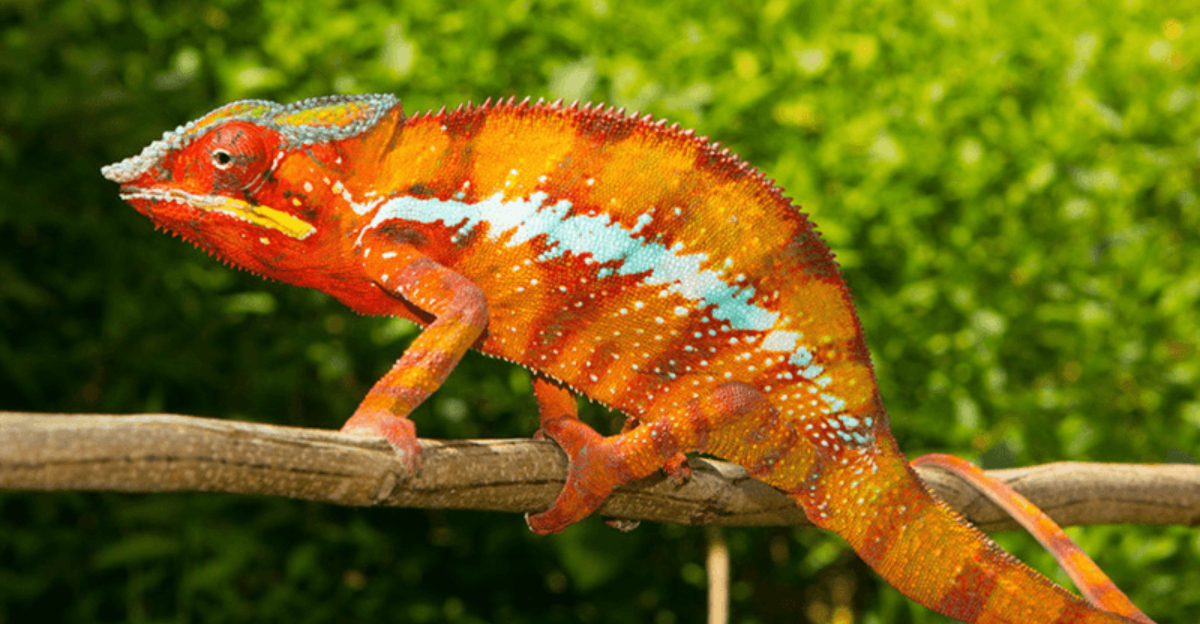
Those remarkable color-shifting lizards you’ve seen in nature shows aren’t just showing off. Chameleons transform their skin colors for reasons far beyond simple camouflage.
These fascinating reptiles have developed color-changing abilities as sophisticated communication tools and survival mechanisms that help them thrive in their natural habitats.
1. Temperature Regulation
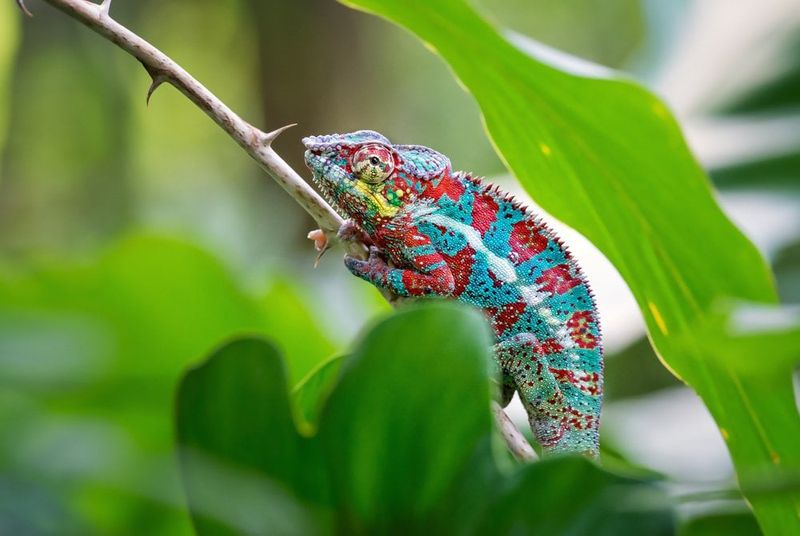
When the morning sun hits, chameleons often darken their skin to absorb more heat. During scorching midday temperatures, they’ll switch to lighter colors to reflect sunlight instead.
This natural thermostat helps them maintain optimal body temperature without having to move locations constantly.
2. Courtship Displays
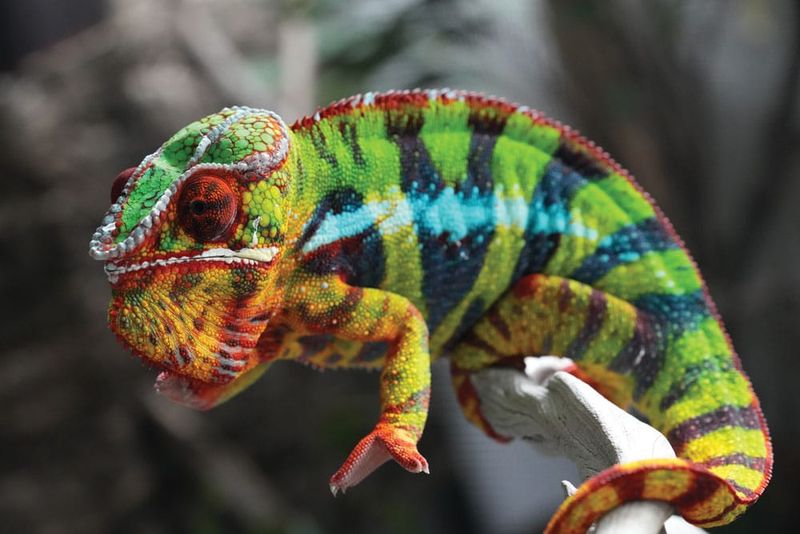
Love-struck male chameleons flash their most vibrant colors when wooing potential mates. These dazzling displays feature electric blues, bright yellows, and vivid greens that would make any disco ball jealous.
Females carefully evaluate these color shows, choosing partners with the most impressive displays.
3. Territorial Warnings
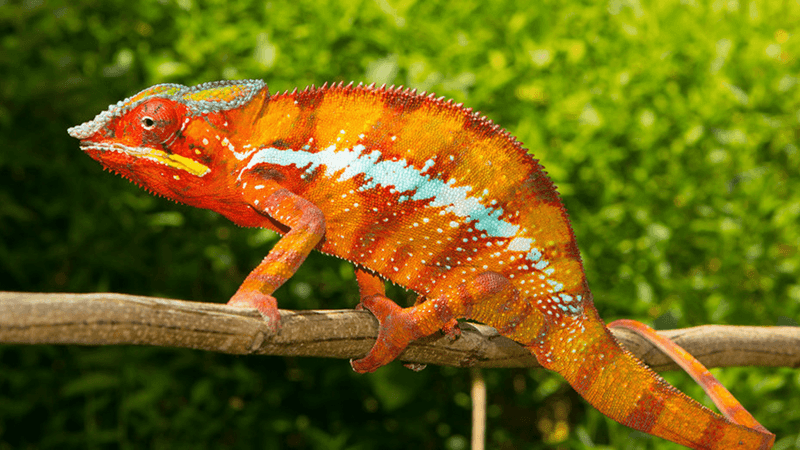
Spot a chameleon suddenly sporting bold patterns and intense colors? Back away slowly! These striking transformations serve as visual “keep out” signs to rival chameleons.
Males especially use this technique to defend their territory without resorting to physical fights, saving energy and avoiding injury.
4. Emotional States
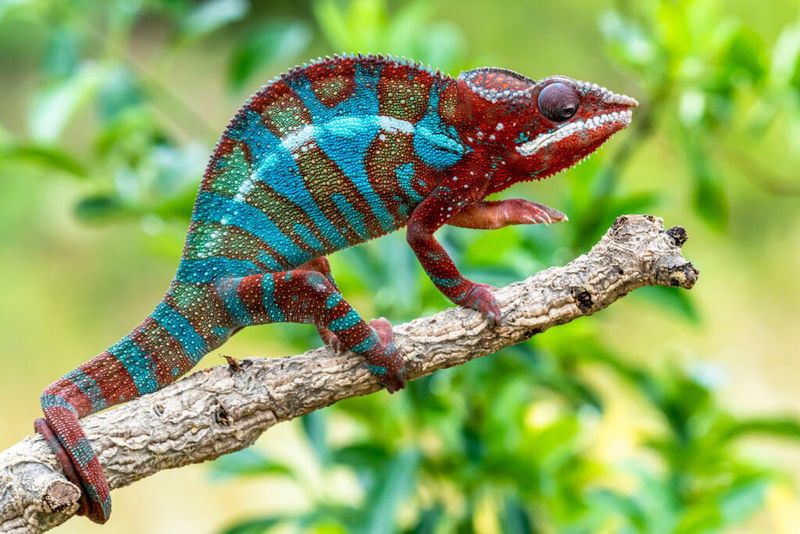
Just had a bad day? Your face might redden. Chameleons experience similar color shifts based on their moods.
Stress, fear, and relaxation each trigger distinct color patterns across their bodies.
Scientists track these changes to better understand chameleon psychology and welfare in both wild and captive settings.
5. Camouflage Tactics

Contrary to popular belief, hiding isn’t the main reason chameleons change color. But they certainly use this skill when needed! Certain species blend masterfully with their surroundings to avoid predators.
Forest-dwelling chameleons might shift to leafy greens, while desert species adopt sandy browns and tans.
6. Social Signaling
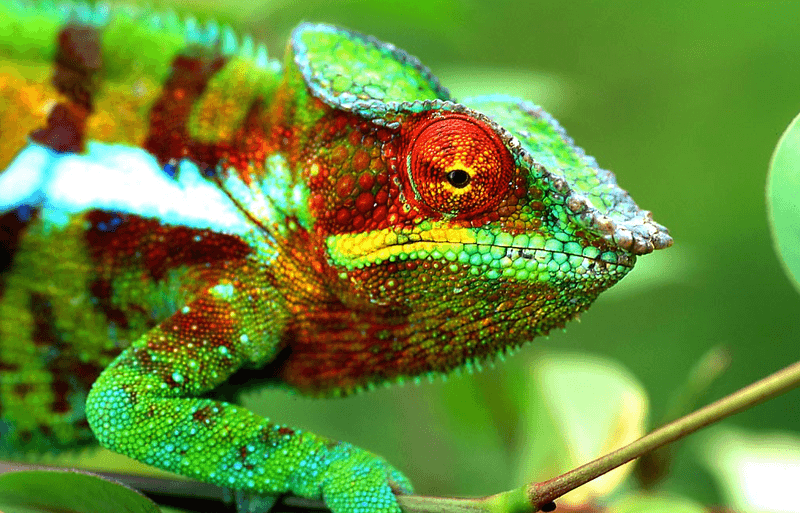
Chameleons have developed an entire color-based language! Subtle hue shifts communicate submission, dominance, or willingness to interact with other chameleons.
These social signals help maintain harmony in chameleon communities, allowing them to navigate complex social interactions without constant confrontation.
7. Pregnancy Announcements
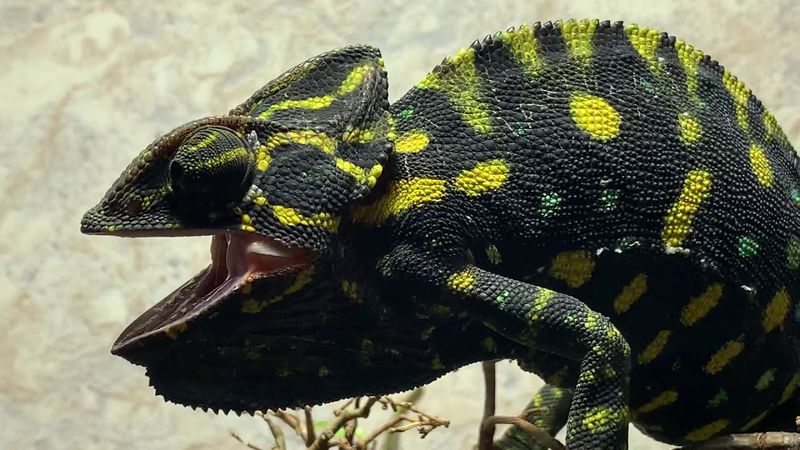
Female chameleons broadcast their reproductive status through distinctive color patterns. A gravid (pregnant) female often displays darker, more contrasting colors to signal she’s carrying eggs.
This visual announcement keeps persistent males at bay, allowing her to conserve energy for developing her offspring.
8. Victory Celebrations
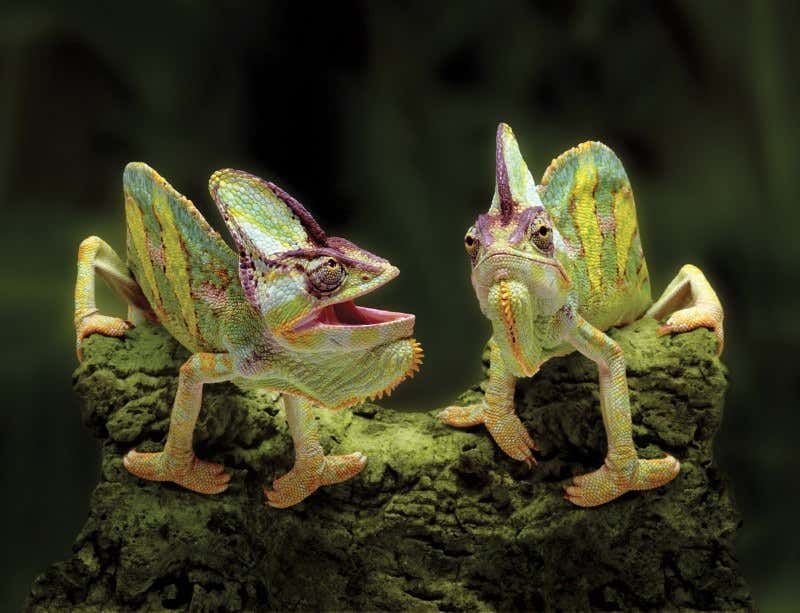
Winning feels good, even for chameleons! After successfully defending territory or attracting a mate, males often flash brilliant victory colors throughout their bodies.
These temporary celebrations serve as status symbols to other chameleons nearby, establishing social hierarchies within their habitat.
9. Predator Confusion
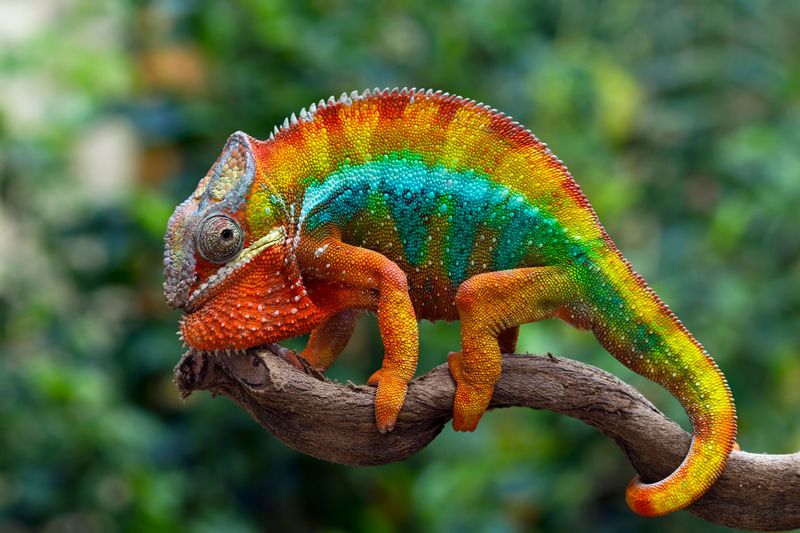
When escape isn’t an option, some chameleon species flash startling color patterns to confuse attackers. This sudden transformation can momentarily stun predators, buying precious seconds for escape.
Combined with erratic movements, these visual disruptions serve as effective last-resort defense mechanisms.
10. Light Adaptation
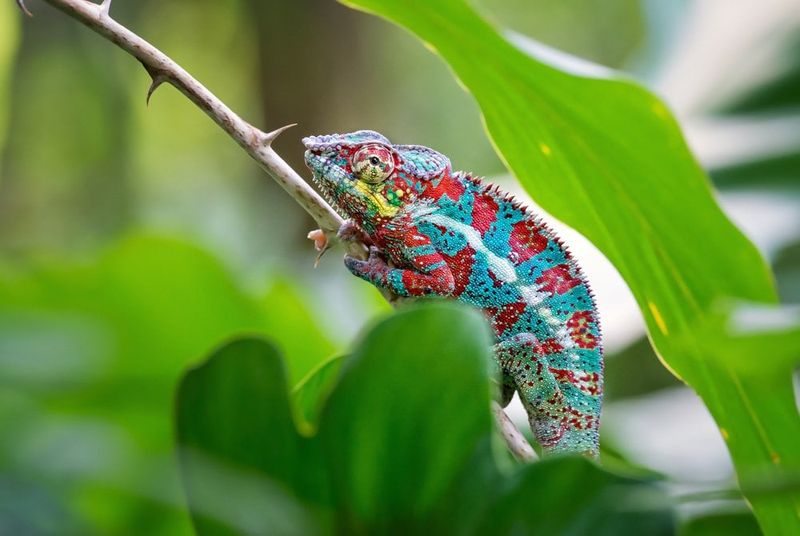
Stepping from bright sunshine into shadow triggers immediate color adjustments in chameleons. Their specialized skin cells respond to changing light conditions within seconds.
This adaptation helps optimize their vision by controlling how much light reflects off their skin, similar to how we might squint in bright conditions.
11. Health Indicators

Dull, unchanging colors often signal illness in chameleons. Healthy specimens maintain vibrant baseline colors and change hues frequently throughout the day.
Experienced chameleon keepers monitor these color patterns closely, as they provide valuable early warning signs of potential health problems.
12. Seasonal Adjustments
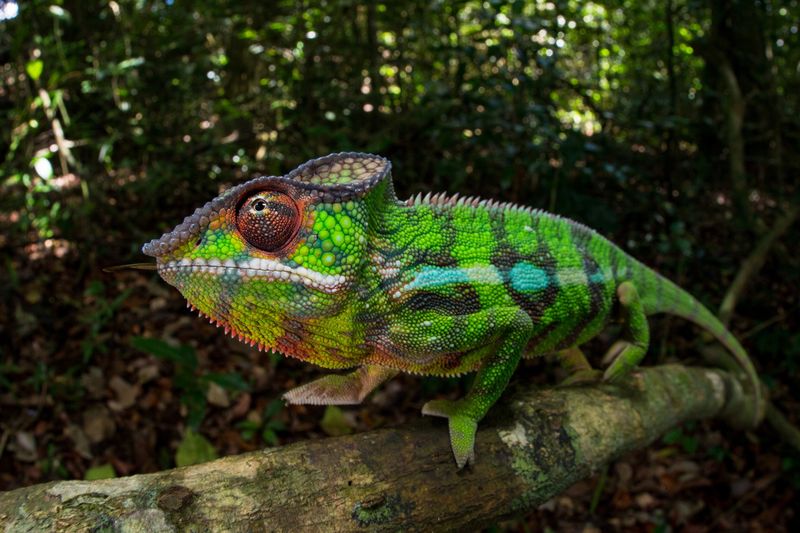
Many chameleon species adopt different base colors depending on the season. During dry periods, they might maintain lighter colors to reflect heat and reduce water loss.
Rainy seasons bring out deeper, more saturated colors that help them blend with lush vegetation.
13. Sleep Transitions
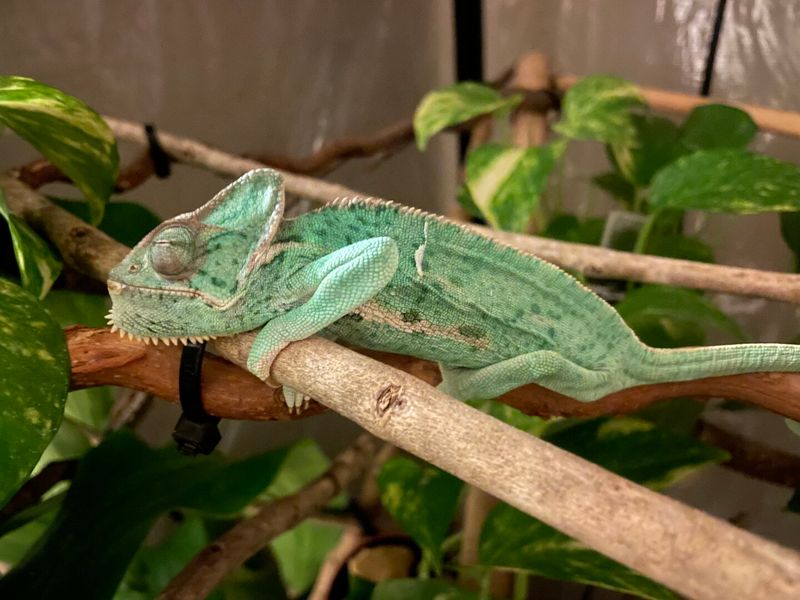
Nighttime brings dramatic color shifts as chameleons prepare for rest. Most species adopt pale, relaxed colors when sleeping – often creamy whites or light pastels.
This nighttime palette helps conserve energy since maintaining vibrant colors requires biological effort and resources.
14. Hunting Strategies
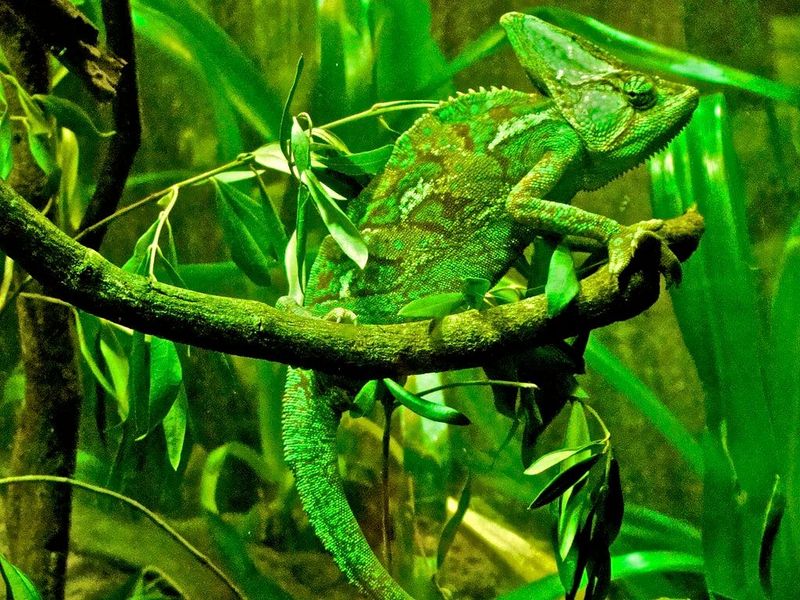
Stalking prey requires stealth, and chameleons adjust their colors to become nearly invisible while hunting. Their slow, methodical movements combined with perfect camouflage make them deadly ambush predators.
Some species even create disruptive patterns that break up their outline, making them harder for insects to detect.
15. Age Signaling
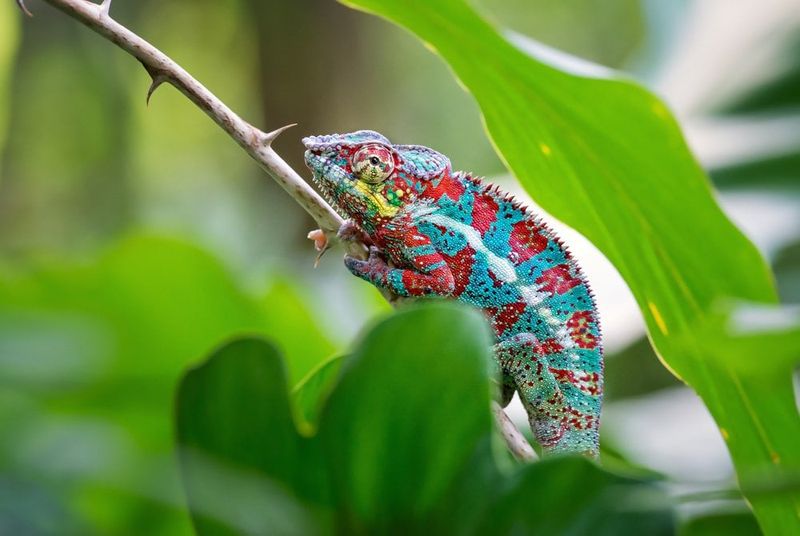
Young chameleons often display different color patterns than adults of the same species. These juvenile markings help mature chameleons recognize youngsters, reducing aggressive encounters.
As they age, their color-changing abilities become more sophisticated, allowing for increasingly complex social interactions.
16. Ultraviolet Communication
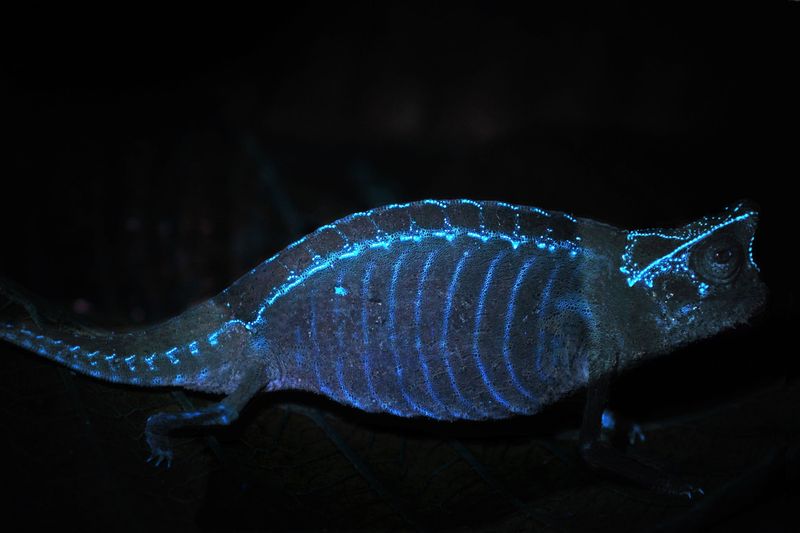
The most fascinating color changes happen in spectrums humans can’t even see! Chameleons can display and perceive ultraviolet patterns invisible to our eyes.
These secret UV signals allow them to communicate privately, even when predators or prey are watching. Scientists need special cameras to study this hidden language.






